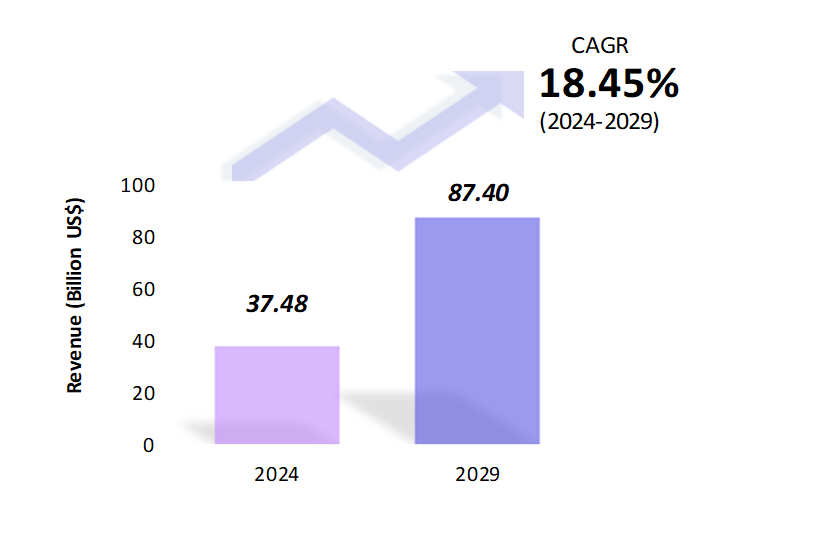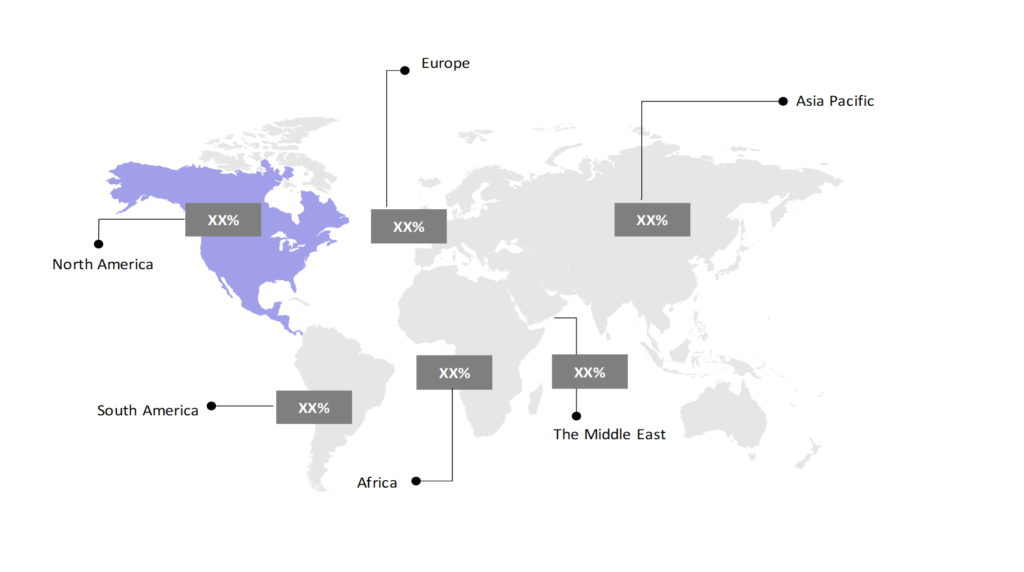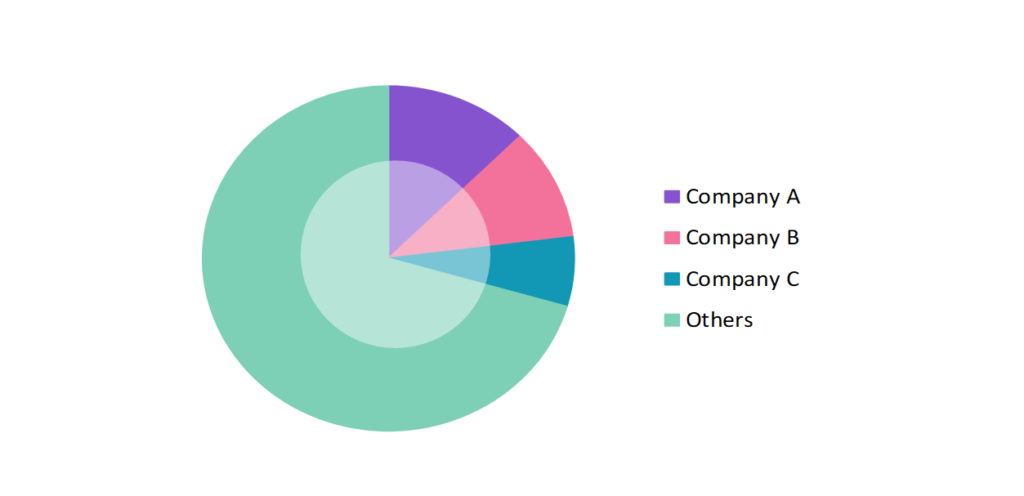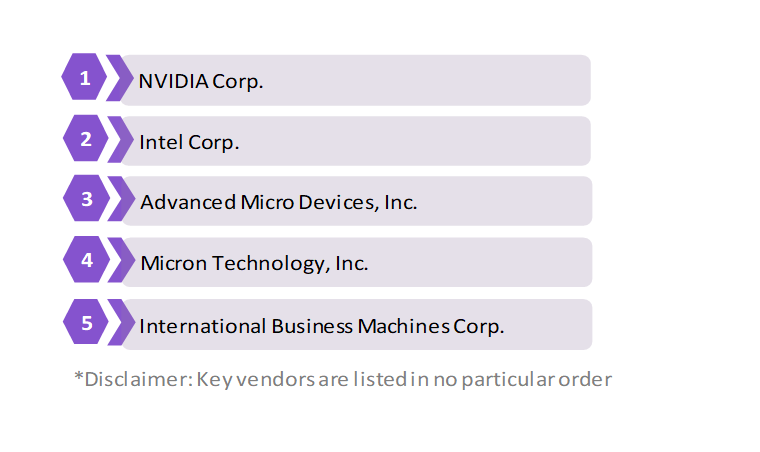Artificial Intelligence (AI) in Cybersecurity Market Outlook: Size, Share, Trends & Growth Analysis (2024-2029)
The report covers a comprehensive analysis segmented by Offering (Hardware, Software, Services), by Deployment Mode (On-Premises, Cloud), by Security Type (Network Security, Endpoint Security, Application Security, Cloud Security), by Industry Vertical (BFSI, Retail & E-commerce, Healthcare, Automotive & Transportation, Government & Defense, Manufacturing, Others), by Geography (North America, South America, Asia Pacific, Europe, The Middle East, Africa).
Artificial Intelligence (AI) in Cybersecurity Market Snapshot

Artificial Intelligence (AI) in Cybersecurity Market Overview
The global artificial intelligence (AI) in cybersecurity market is estimated to be at $37.48 Bn in 2024 and is anticipated to reach $87.4 Bn in 2029. The global artificial intelligence (AI) in cybersecurity market is registering a CAGR of 18.45% during the forecast period 2024-2029. Artificial Intelligence (AI) in the cybersecurity market is experiencing robust growth, driven by the increasing frequency and sophistication of cyber threats and the need for advanced security solutions. Organizations from a variety of industries are heavily investing in AI-driven cybersecurity as a means of safeguarding sensitive data and ensuring business continuity as cyberattacks grow more sophisticated.
The exponential increase in cyber threats, such as ransomware, phishing, and advanced persistent threats (APTs), is a major driver for AI in cybersecurity. Organizations are turning to AI to enhance their defensive capabilities and respond to incidents more effectively.
As businesses increasingly digitize their operations and adopt technologies like IoT, cloud computing, and big data, the attack surface expands. AI helps manage and secure these complex environments by providing real-time insights and automated responses.
Endpoint security is also gaining significant traction, driven by the rise in remote work and BYOD (bring your device) policies. Solutions from companies like Symantec and McAfee employ AI to monitor and protect endpoints from malware, ransomware, and other threats.
The application security segment benefits from AI’s ability to identify vulnerabilities during the software development lifecycle. AI-powered tools from companies like Checkmarx are increasingly being used to automate code reviews and detect security flaws early in the development process.
Cloud security is another rapidly growing area, reflecting the shift towards cloud-based infrastructures. By offering automated incident response, continuous monitoring, and sophisticated threat identification, artificial intelligence (AI) improves cloud security. AI is used in solutions from companies like Microsoft Azure and Amazon Web Services (AWS) to efficiently safeguard cloud settings. All things considered, the market for AI in cybersecurity is expected to increase significantly due to ongoing developments in AI technology and rising investments in cybersecurity infrastructure.
Artificial Intelligence (AI) in Cybersecurity Market Coverage
| Historical & Forecast Period | 2018-2029 |
| Base Year | 2023 |
| Forecast Period | 2024-2029 |
| Units | Billion US$ |
| Segments | Offering, Deployment Mode, Security Type, Industry Vertical |
| Geographies | North America, South America, Asia Pacific, Europe, The Middle East, Africa |
| Key Vendors | NVIDIA Corp., Intel Corp., Advanced Micro Devices, Inc., Micron Technology, Inc., International Business Machines Corp. |
Key Geographies of Artificial Intelligence (AI) in Cybersecurity Market, 2023

Porter’s 5 Forces Analysis of Artificial Intelligence (AI) in Cybersecurity Market

Artificial Intelligence (AI) in Cybersecurity Market Trends
The AI in the cybersecurity market is experiencing rapid growth, driven by the increasing sophistication of cyber threats and the need for robust security solutions. The use of machine learning (ML) algorithms to improve threat detection and response capabilities is one prominent development. Large volumes of data can be analyzed in real time by AI-powered systems, which can spot anomalies and possible risks that conventional techniques could overlook. For example, Darktrace uses machine learning (ML) to automatically identify and address cybersecurity events, cutting down on response times and minimizing harm.
The application of AI to predictive analytics in cybersecurity is another trend. Artificial intelligence (AI) can predict future threats and vulnerabilities by evaluating historical data, giving enterprises the ability to proactively fortify their defenses. Businesses may keep ahead of fraudsters by using predictive analytics from companies like Splunk, which use AI.
The rise of AI-driven security automation is also notable. Human resources can be used for more complicated activities by automating time-consuming and repetitive processes like patch management and security compliance. AI is used, for instance, by IBM’s QRadar to automate threat detection and response, increasing productivity and lowering human error.
Furthermore, AI is enhancing user authentication and access control through biometric systems and behavioral analytics. AI is used by programs like BioCatch to examine user behavior patterns and provide more secure and smooth authentication procedures.
The convergence of AI with Internet of Things (IoT) security is another key trend. With the proliferation of IoT devices, securing these interconnected systems is crucial. AI aids in monitoring and securing IoT networks by identifying unusual patterns that might indicate security breaches, as seen with Palo Alto Networks’ IoT security solutions. Overall, AI’s integration into cybersecurity is revolutionizing the industry by providing more sophisticated, efficient, and proactive defense mechanisms against evolving cyber threats.
Artificial Intelligence (AI) in Cybersecurity Market Driving Factors
The AI in cybersecurity market is driven by several key factors. The exponential increase in cyberattacks and data breaches is a primary driver. As cybercriminals become more sophisticated, organizations are compelled to adopt advanced AI-based solutions to protect their sensitive data. For instance, the rise in ransomware attacks has led companies to deploy AI-driven defenses that can quickly identify and neutralize such threats.
Moreover, the growing complexity and volume of data in organizations necessitate robust security measures. Traditional cybersecurity methods are often inadequate for handling large-scale data environments, prompting the adoption of AI to ensure comprehensive protection. AI systems, like those from Cylance, leverage vast datasets to predict and prevent potential security incidents effectively.
Moreover, businesses are being forced to incorporate AI by compliance norms and legal obligations. Stricter cybersecurity laws, like the CCPA in California and the GDPR in Europe, are being implemented by governments and regulatory agencies around the world, requiring improved data protection safeguards. AI offers continuous monitoring and reporting capabilities that assist firms in adhering to these standards.
Lastly, the shortage of skilled cybersecurity professionals drives the demand for AI solutions. AI can augment human capabilities by automating routine tasks and allowing cybersecurity teams to focus on more strategic initiatives. For example, FireEye’s AI-based tools help address the talent gap by automating threat detection and response, ensuring robust security even with limited human resources. These factors work together to drive the cybersecurity industry’s use of AI, which makes it an essential part of contemporary security plans.
Artificial Intelligence (AI) in Cybersecurity Market Challenges
AI in the cybersecurity market faces several significant challenges. One major challenge is the complexity and high cost of implementing AI solutions. Developing and deploying AI systems requires substantial investment in technology, infrastructure, and skilled personnel. Small and medium-sized enterprises (SMEs) often struggle to afford these advanced solutions. For instance, integrating comprehensive AI-driven security platforms like those from Palo Alto Networks can be prohibitively expensive for smaller businesses.
Another challenge is the potential for AI to be exploited by cybercriminals. Adversarial attacks, where attackers manipulate AI systems to evade detection, are a growing concern. Cybercriminals can use techniques such as data poisoning to corrupt the training data of AI models, making them less effective.
The shortage of AI expertise is also a critical issue, as there is a significant gap in the number of professionals skilled in both cybersecurity and AI. This shortage hampers the effective development and deployment of AI-driven security solutions. Organizations like IBM have been investing in training programs to bridge this gap, but the demand for skilled professionals still far exceeds supply.
Additionally, AI systems require vast amounts of data to function effectively, raising privacy and ethical concerns. Collecting and processing large datasets can lead to the potential misuse of sensitive information. Businesses also must ensure they comply with privacy rules like GDPR, which makes implementing AI more difficult. Lastly, the dynamic nature of cyber threats poses a challenge for AI systems, which must constantly evolve to detect new and emerging threats. It’s critical to make sure AI models are updated frequently and have the flexibility to adjust to new attack vectors. Despite these obstacles, to fully utilize AI in cybersecurity, ongoing developments and calculated investments are necessary.
Artificial Intelligence (AI) in Cybersecurity Market – Key Industry News
- In June 2024, Zscaler and Nvidia announced a strategic partnership to accelerate the adoption of AI-driven security solutions in enterprises. This collaboration aims to enhance the security capabilities of organizations by leveraging Nvidia’s advanced AI technology with Zscaler’s robust cloud security platform.
- In May 2024, Palo Alto Networks and IBM formed a significant partnership to enhance security for customers through AI-driven solutions.
- In March 2024, Oracle partnered with NVIDIA to transform the computing landscape by integrating Oracle Cloud Infrastructure (OCI) with NVIDIA’s accelerated computing technologies.
Artificial Intelligence (AI) in Cybersecurity Market Competitive Landscape
The competitive landscape of the AI in cybersecurity industry is characterized by both well-established tech giants and innovative startups. With all-encompassing, AI-enhanced security solutions designed for large businesses and the government, industry leaders International Business Machines Corp., Intel Corp., and Nvidia Corp.
IBM leverages its Watson AI for advanced threat intelligence, while Cisco integrates AI to boost network security and threat response. Palo Alto Networks focuses on cloud and network security, utilizing AI for automated threat management.
Simultaneously, businesses such as Cylance (bought by BlackBerry), a leader in endpoint protection, and Darktrace, renowned for its real-time threat detection, represent the cutting edge of the industry. Emerging firms such as Vectra AI, with its focus on network detection and response, and CrowdStrike, offering cloud-native endpoint protection, further intensify the competition. Continuous innovation, strategic partnerships, and acquisitions drive the market, compelling vendors to enhance their AI capabilities and deliver more sophisticated, efficient, and user-friendly cybersecurity solutions to combat the evolving threat landscape.
Artificial Intelligence (AI) in Cybersecurity Market Company Share Analysis, 2023 (%)

Artificial Intelligence (AI) in Cybersecurity Market – Key Companies

Reason to Buy from us

Table of Contents
| 1. Introduction |
|---|
| 1.1. Research Methodology |
| 1.2. Scope of the Study |
| 2. Market Overview / Executive Summary |
| 2.1. Global Artificial Intelligence (AI) in Cybersecurity Market (2018 – 2022) |
| 2.2. Global Artificial Intelligence (AI) in Cybersecurity Market (2023 – 2029) |
| 3. Market Segmentation |
| 3.1. Global Artificial Intelligence (AI) in Cybersecurity Market by Offering |
| 3.1.1. Hardware |
| 3.1.2. Software |
| 3.1.3. Service |
| 3.2. Global Artificial Intelligence (AI) in Cybersecurity Market by Deployment Mode |
| 3.2.1. On-Premises |
| 3.2.2. Cloud |
| 3.3. Global Artificial Intelligence (AI) in Cybersecurity Market by Security Type |
| 3.3.1. Network Security |
| 3.3.2. Endpoint Security |
| 3.3.3. Application Security |
| 3.3.4. Cloud Security |
| 3.4. Global Artificial Intelligence (AI) in Cybersecurity Market by Industry Vertical |
| 3.4.1. BFSI |
| 3.4.2. Retail & E-commerce |
| 3.4.3. Healthcare |
| 3.4.4. Automotive & Transportation |
| 3.4.5. Government & Défense |
| 3.4.6. Manufacturing |
| 3.4.7. Others |
| 4. Regional Segmentation |
| 4.1. North America |
| 4.1.1. The U.S |
| 4.1.2. Canada |
| 4.1.3. Mexico |
| 4.2. South America |
| 4.2.1. Brazil |
| 4.2.2. Argentina |
| 4.2.3. Colombia |
| 4.2.4. Chile |
| 4.2.5. Rest of South America |
| 4.3. Asia Pacific |
| 4.3.1. China |
| 4.3.2. India |
| 4.3.3. Japan |
| 4.3.4. South Korea |
| 4.3.5. Rest of Asia Pacific |
| 4.4. Europe |
| 4.4.1. UK |
| 4.4.2. Germany |
| 4.4.3. Italy |
| 4.4.4. France |
| 4.4.5. Spain |
| 4.4.6. Rest of Europe |
| 4.5. The Middle East |
| 4.5.1. Turkey |
| 4.5.2. UAE |
| 4.5.3. Saudi Arabia |
| 4.5.4. Rest of the Middle East |
| 4.6. Africa |
| 4.6.1. Egypt |
| 4.6.2. South Africa |
| 4.6.3. Rest of Africa |
| 5. Value Chain Analysis of the Global Artificial Intelligence (AI) in Cybersecurity Market |
| 6. Porter Five Forces Analysis |
| 6.1. Threats of New Entrants |
| 6.2. Threats of Substitutes |
| 6.3. Bargaining Power of Buyers |
| 6.4. Bargaining Power of Suppliers |
| 6.5. Competition in the Industry |
| 7. Trends, Drivers and Challenges Analysis |
| 7.1. Market Trends |
| 7.1.1. Market Trend 1 |
| 7.1.2. Market Trend 2 |
| 7.1.3. Market Trend 3 |
| 7.2. Market Drivers |
| 7.2.1. Market Driver 1 |
| 7.2.2. Market Driver 2 |
| 7.2.3. Market Driver 3 |
| 7.3. Market Challenges |
| 7.3.1. Market Challenge 1 |
| 7.3.2. Market Challenge 2 |
| 7.3.3. Market Challenge 3 |
| 8. Regulatory Landscape |
| 9. Competitive Landscape |
| 9.1. NVIDIA Corp. |
| 9.2. Intel Corp. |
| 9.3. Advanced Micro Devices, Inc. |
| 9.4. Micron Technology, Inc. |
| 9.5. International Business Machines Corp. |
| 9.6. Company 6 |
| 9.7. Company 7 |
| 9.8. Company 8 |
| 9.9. Company 9 |
| 9.10. Company 10 |
Artificial Intelligence (AI) in Cybersecurity Market – Frequently Asked Questions (FAQs)
What is the current size of the global artificial intelligence (ai) in the cybersecurity market?
The market size for the global artificial intelligence (ai) in cybersecurity market in 2024 is $37.48 Bn.
Who are the major vendors in the global artificial intelligence (ai) in cybersecurity market?
The major vendors in the global artificial intelligence (ai) in cybersecurity market are NVIDIA Corp., Intel Corp., Advanced Micro Devices, Inc., Micron Technology, Inc., International Business Machines Corp.
Which segments are covered under the global artificial intelligence (ai) in cybersecurity market segments analysis?
This report offers in-depth insights into each offering, deployment mode, security type, industry vertical.
